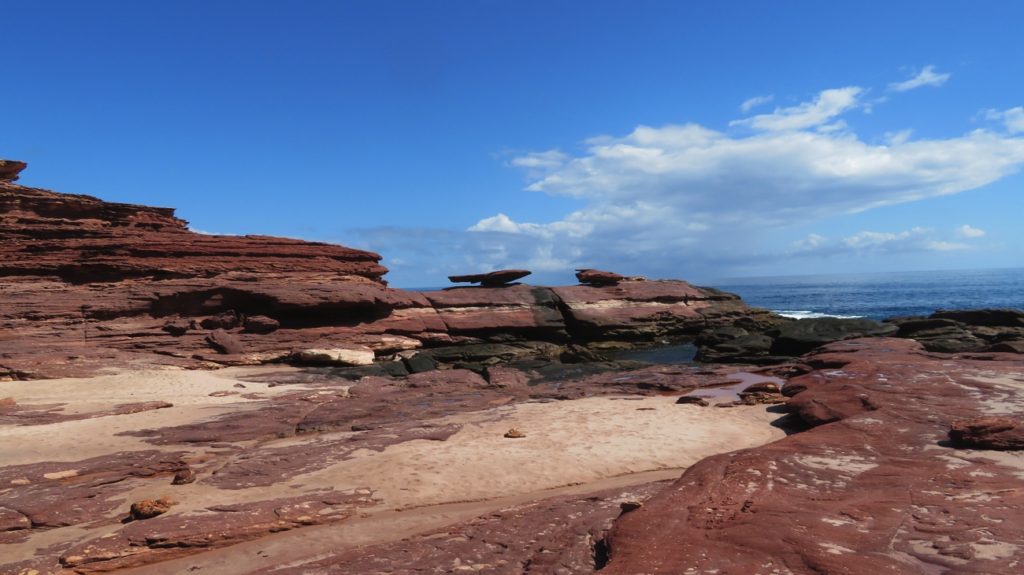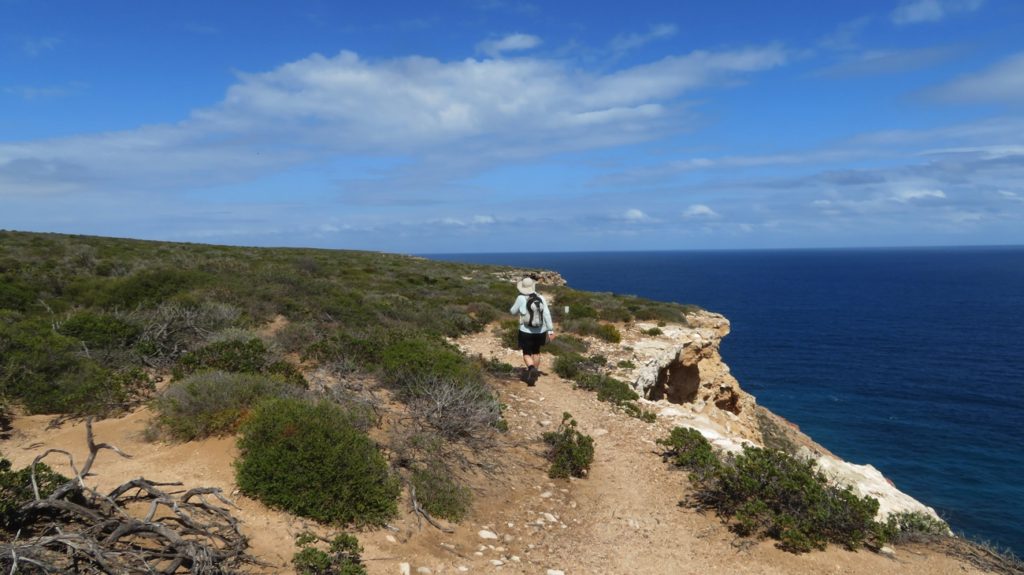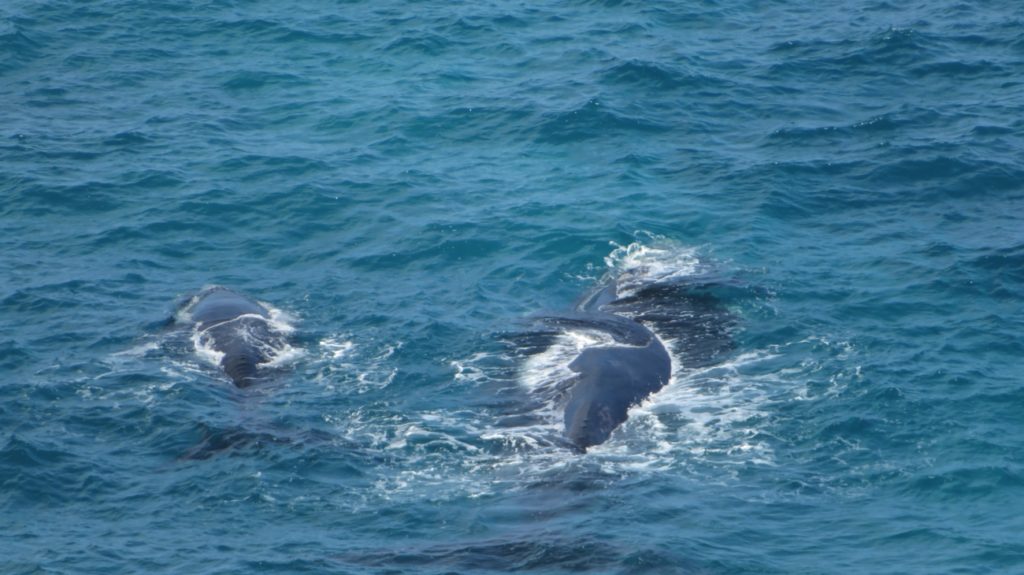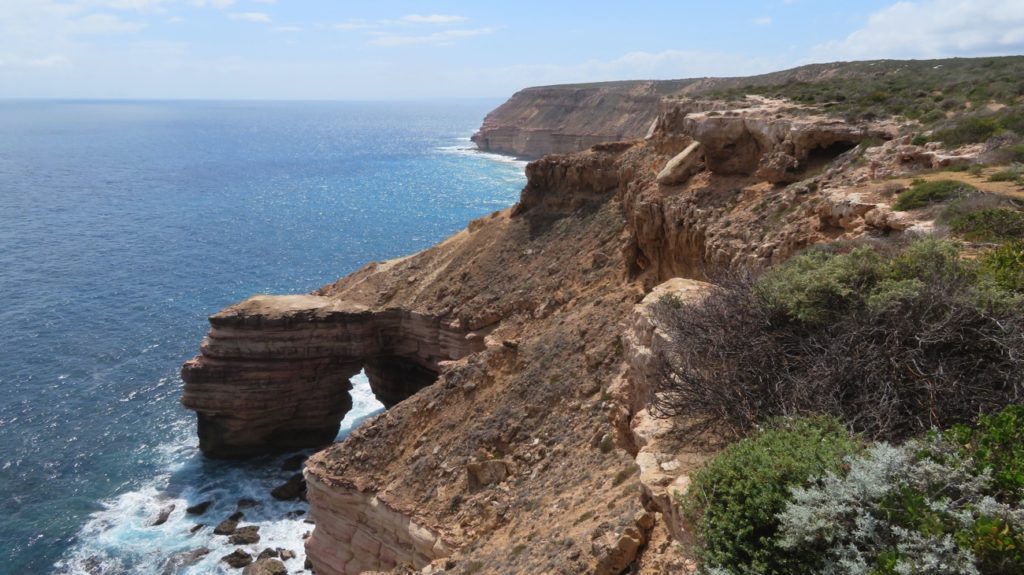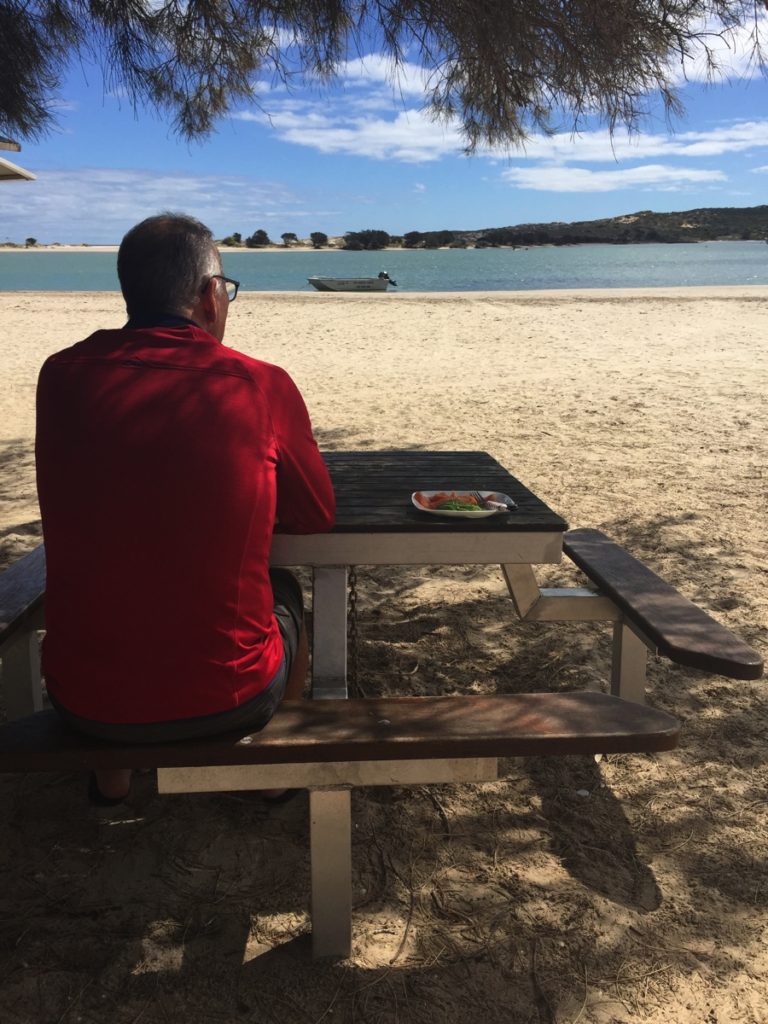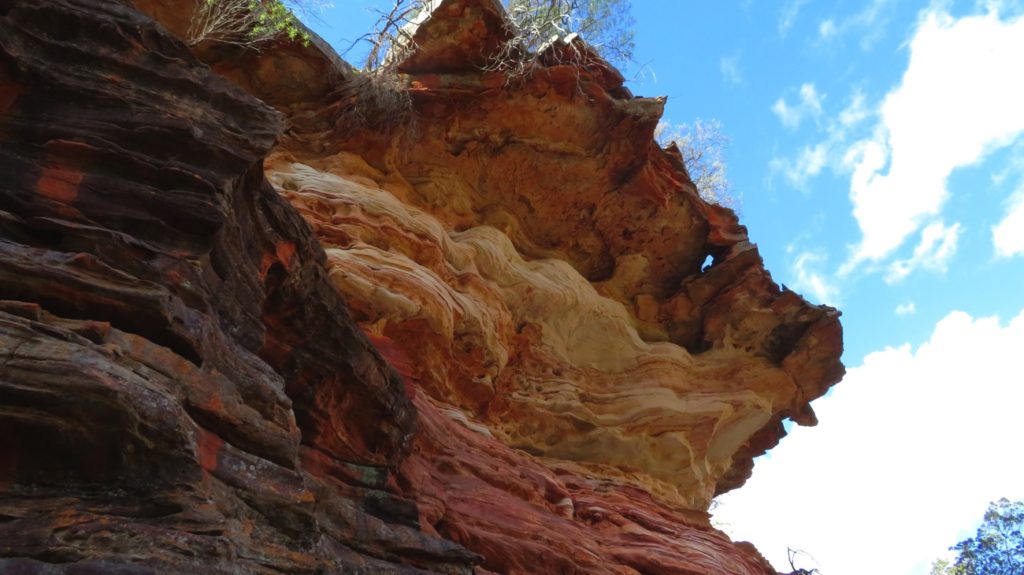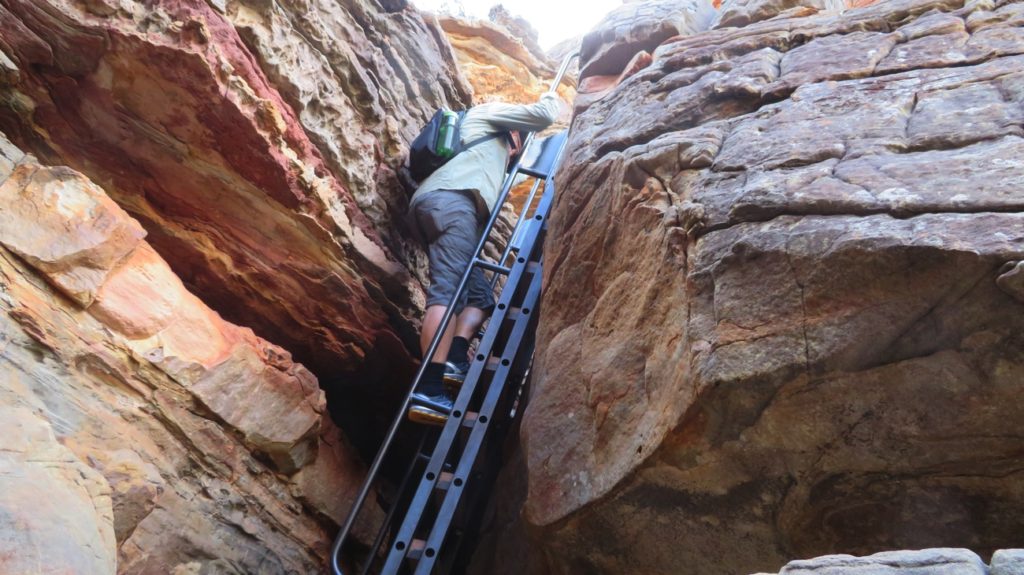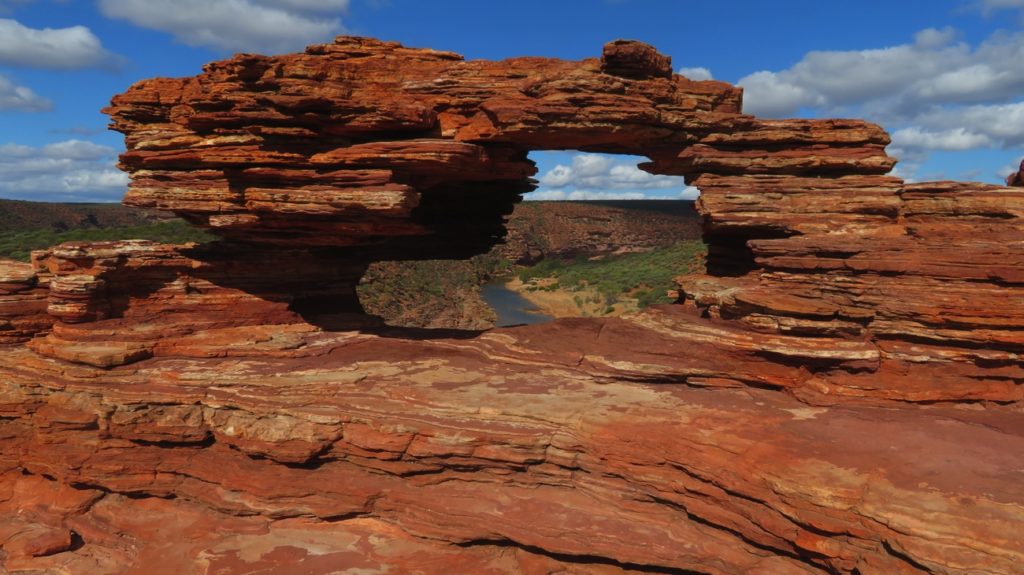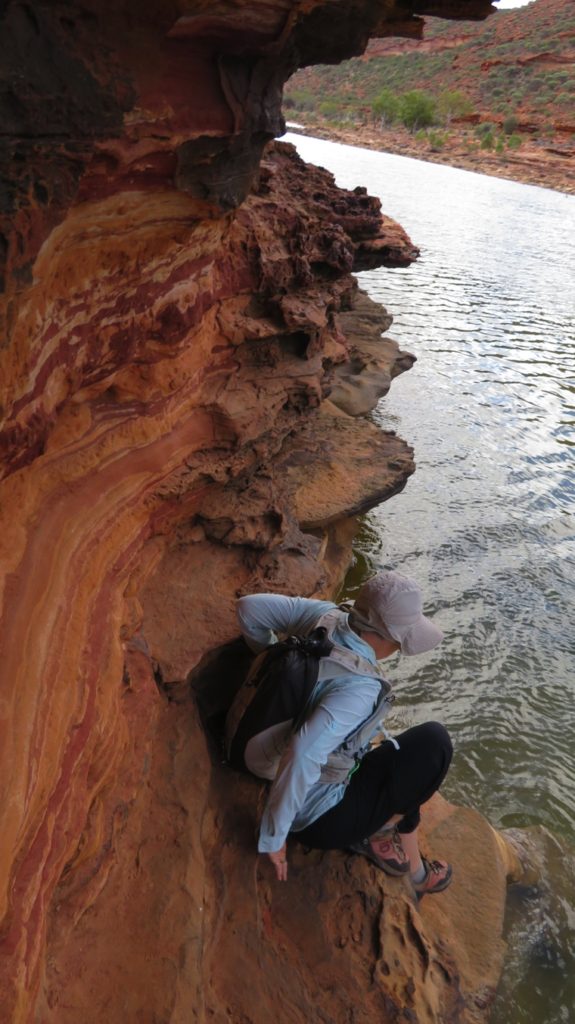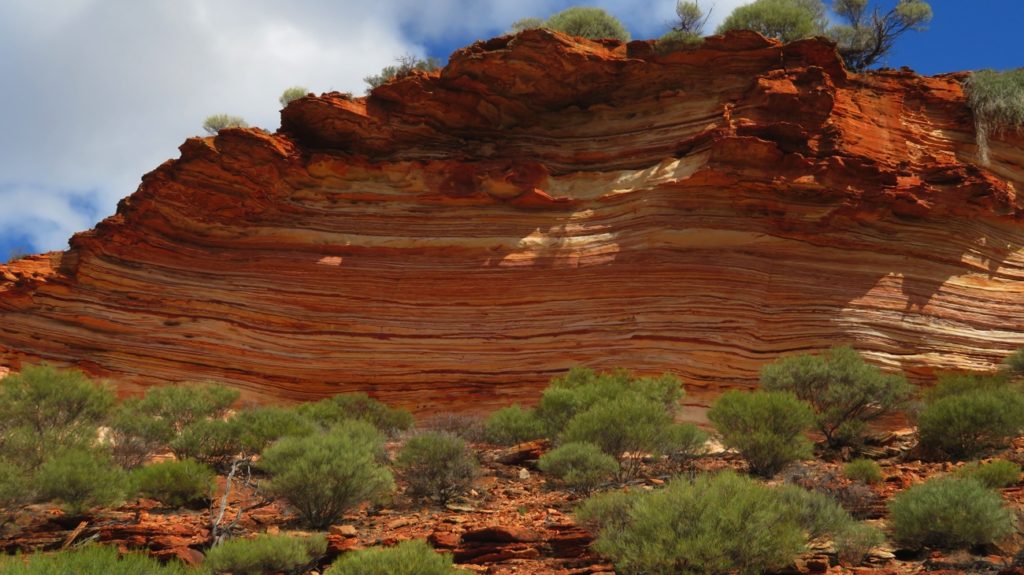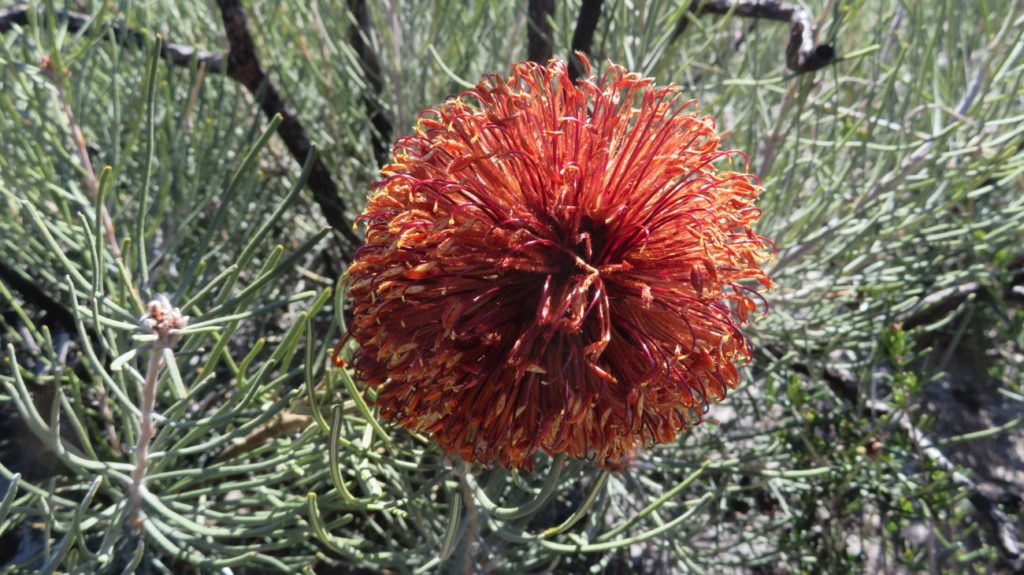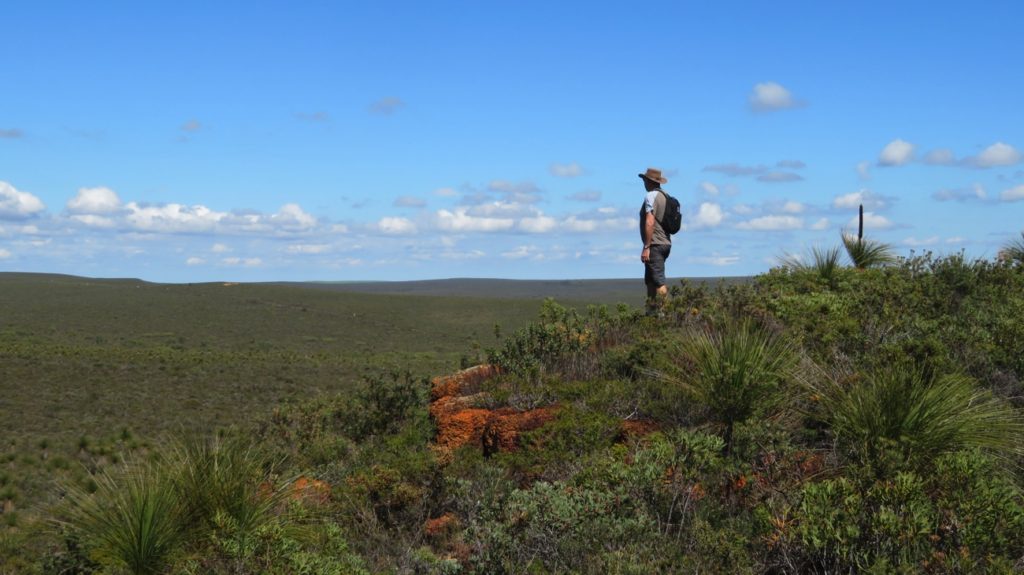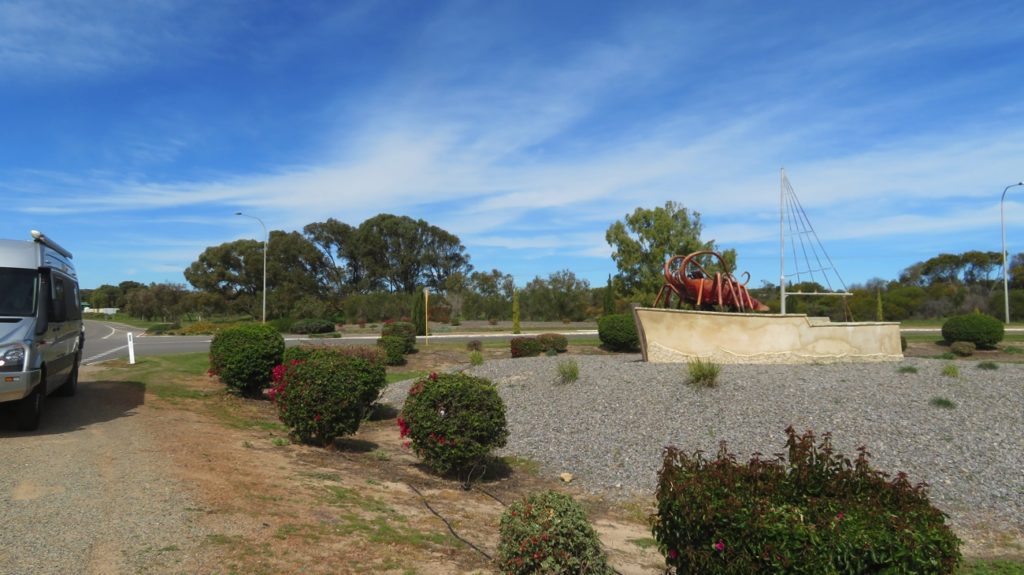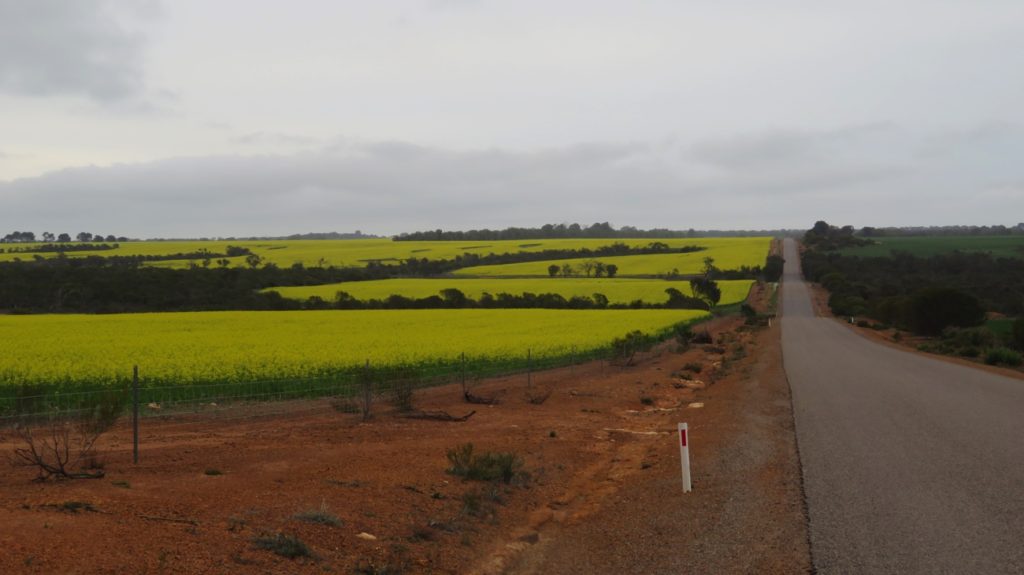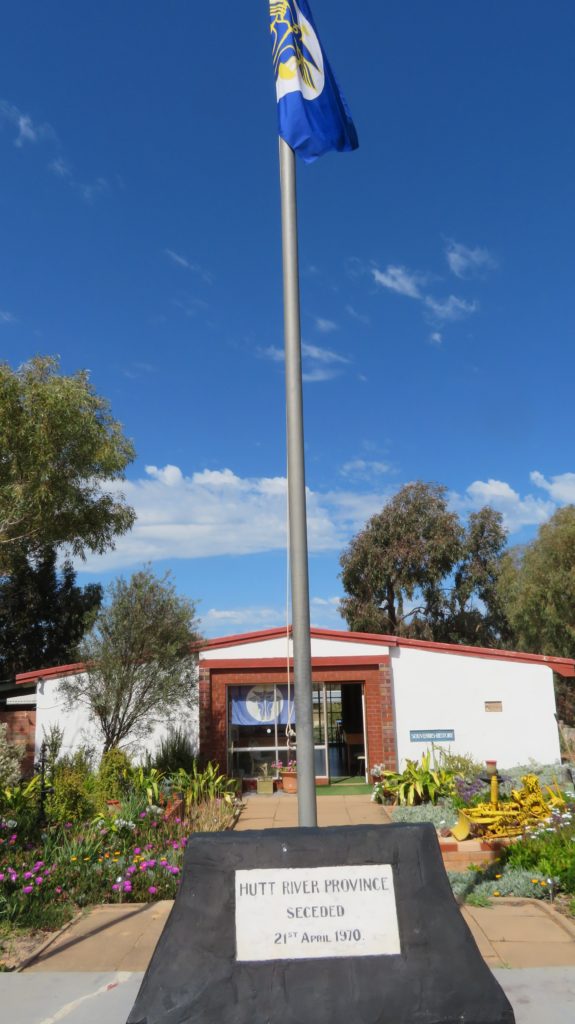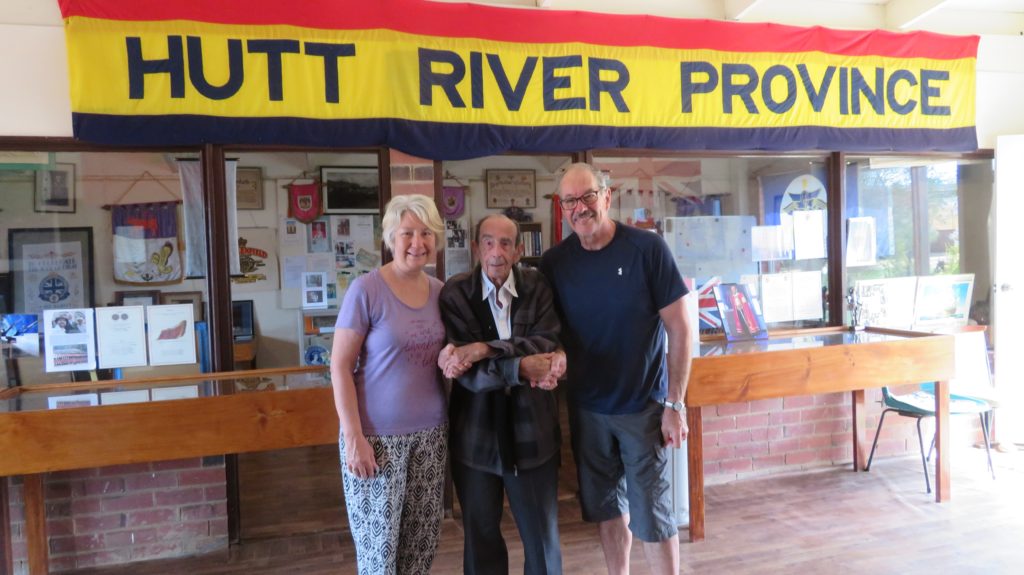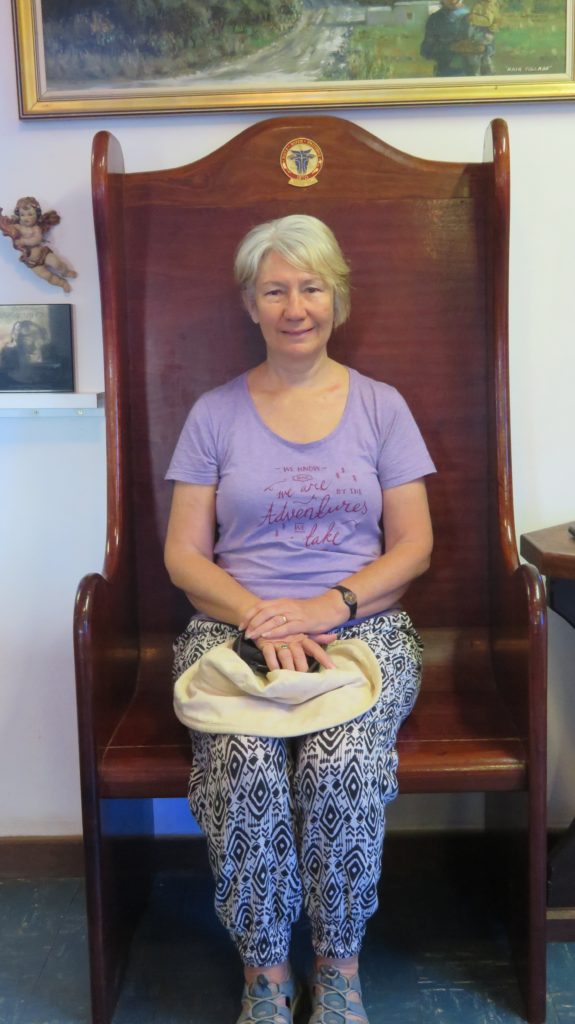3rd – 4th September 2017
Sunday 3rd (Happy Fathers Day)
Here at Hamelin Pool are the oldest living organisms on earth – stromatolites! I must say I did find the explanation of their growth confusing, something to do with Cyanobacteria, light, accretion and the presence of a hypersaline environment. Anyway all these factors come together here at Hamelin Bay where it is full of these cauliflower-mushroom shapes about 50cm high living in the littoral zone.

Stromatolites at low tide. Shark Bay
We also found the shell quarry fascinating – I’d never heard of a shell quarry before.
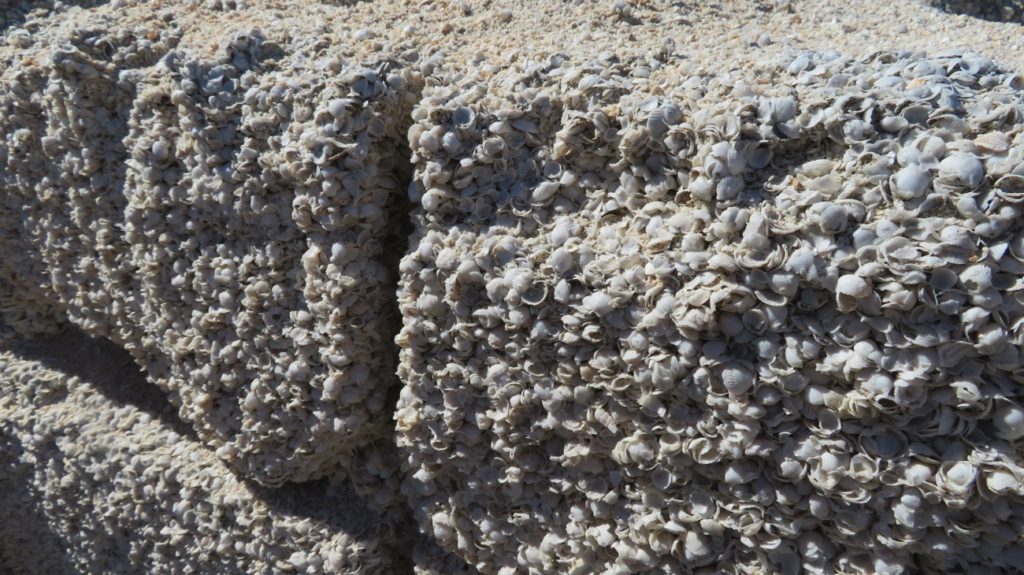
A building block of shell. Shark Bay
Tiny cockle shells, Fragum shells, have been swept up onto the beach over the centuries and become compacted so hard that the early white settlers were able to quarry out blocks of this coquina with cross cut saws to use as building materials. The coquina (compacted shells) are up to 9 metres deep in places.
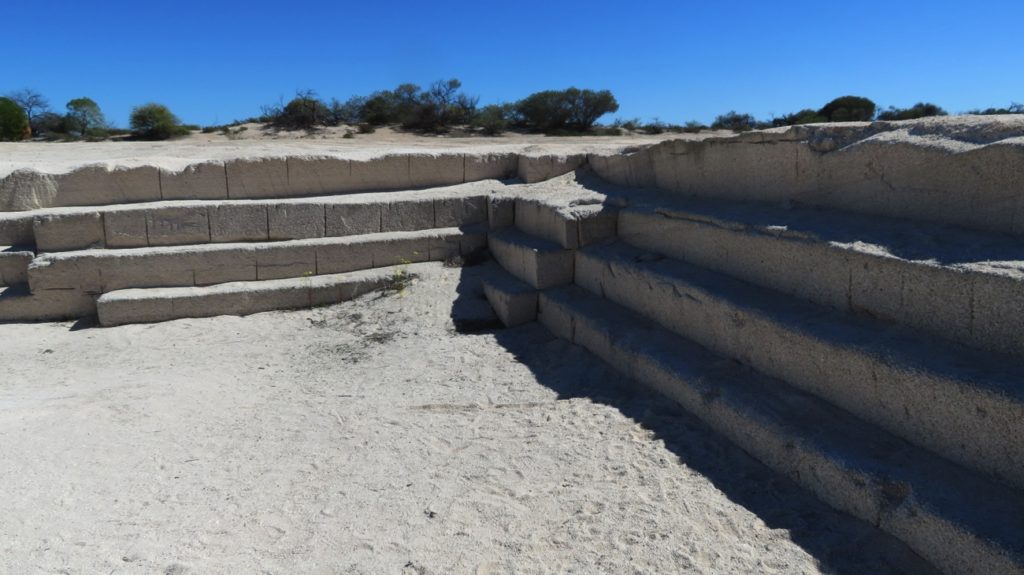
The shell (coquina) quarry.
Heading further into Shark Bay World Heritage area we stopped at Nanga Bay, a pretty Bay with crystal-clear water, Shell Beach where we sat on dunes formed of the tiny cockle shells,
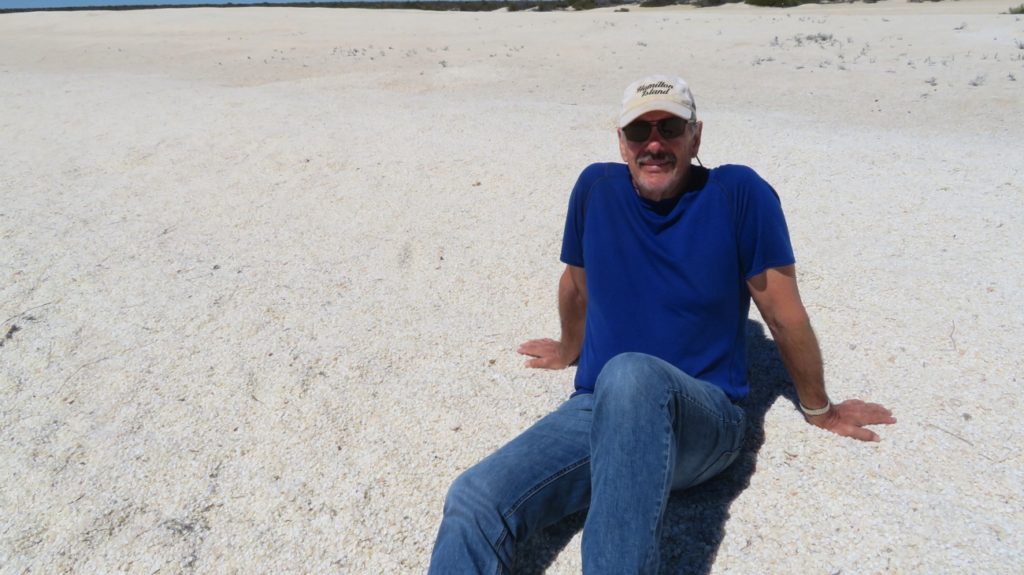
Steve, reclining on an ocean of shells.
then checked out the camp sites at Goulet Bluff, Whalebone Bay, Fowlers campsite and finally Eagle Bluff where we’re camped tonight. There’s a boardwalk along the headland here which gives lovely coastal views and where you can look down into the shallows to see sharks and stingrays. We saw a couple of sharks.
Our campsite is quite idyllic, just a little in from the cliff edge overlooking the bay. Wonderful sunset!

Sunset at our campsite, Eagle Bluff, Shark Bay
Monday 4th
Monkey Mia Resort, on the eastern bay, is renown for the wild dolphins that come in daily to be hand-fed. However, a lot of people also complain about the cost of entry to the area and you may not see any dolphins; they are, after all, wild. The dolphin-feeding takes place at 7.30am and may be repeated once or twice more before 11am, if the dolphins come in.
A powered site at the Monkey Mia caravan park costs $72 – YIKES! We’ve seen plenty of dolphins before, so we camped about 45km away last night at Eagle Bluff and moseyed on in about 10am. We had brunch in the motorhome before wandering in and, would you believe it, 6 dolphins just arrived to be fed. How tinny was that!
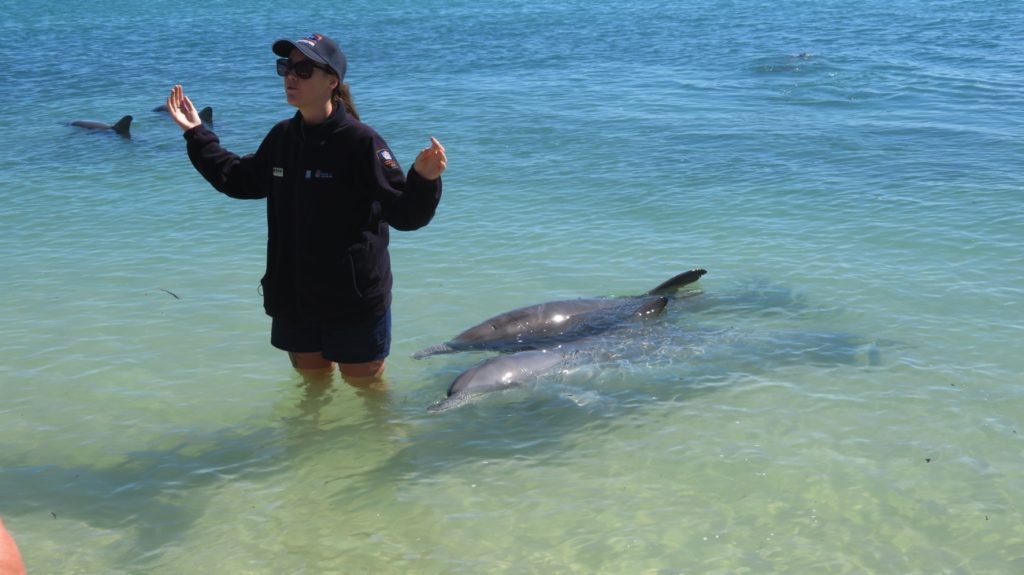
Those two dolphins are hoping the fish they’re about be fed will be ‘that’ big. Monkey Mia, Shark Bay
Despite there being large pods of dolphins here, there are only 6 dolphins they feed and then only give them about 10% of their daily needs. It’s well-supervised and studied by marine biologists who give a talk about dolphin behaviour before the feeding. Despite our nonchalance we both enjoyed it.

Bottle-nose dolphin at Monkey Mia, Shark Bay
We had a lovely walk along the beach and enjoyed a coffee on the deck of the waterfront cafe. I didn’t begrudge the $9 ea entrance fee.
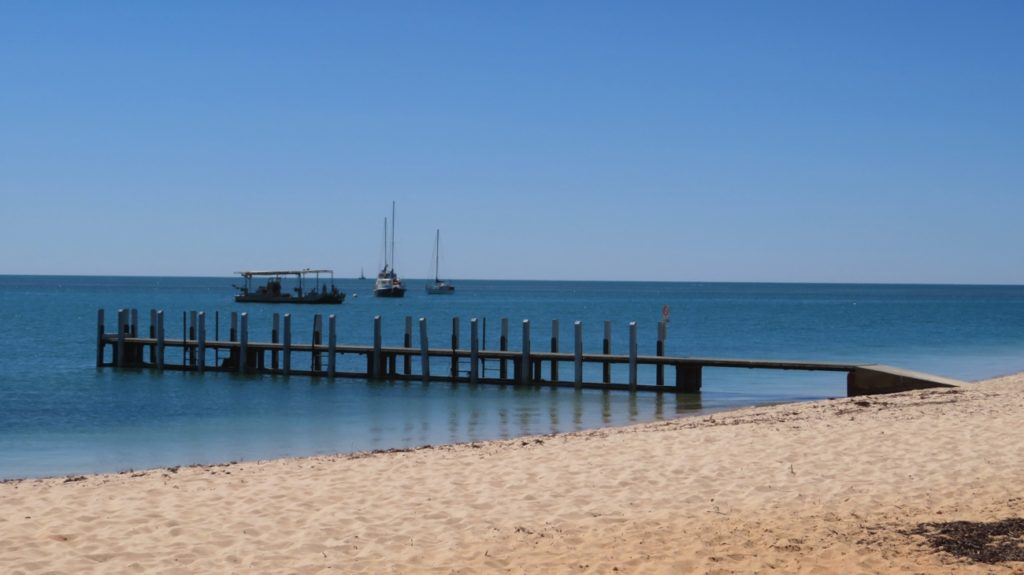
The jetty, Monkey Mia, Shark Bay
Leaving Monkey Mia we drove into Francois Peron National Park. Big signs greeted us informing us it was 4WD-only roads and to lower our tyre pressures to 20. Truck tyres like we drive on can’t be lowered, only minimally if at all. So in we headed to Big Lagoon along 12 km of sandy track with some of it very soft. The good old Trakka, in 4WD mode, tyres still inflated, didn’t falter. Big Lagoon is a pretty inlet with a narrow deep channel but wide shallow areas – perfect for kayaking. The picnic facilities here are superb – large covered gazebos with gas BBQs and picnic tables, as well as great open-air areas all on a boardwalk. We enjoyed a cuppa here before heading back out to Denham.
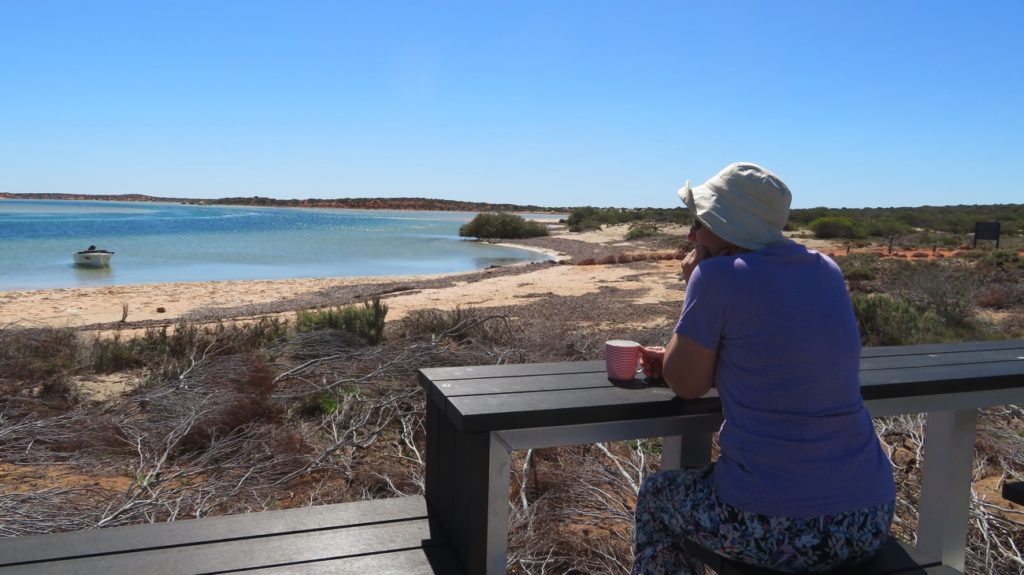
Lovely facilities for picnickers at Big Lagoon, Francois Peron NP
Our plans for the next week don’t include many places where we’ll be able to shop, so a stop at Denham IGA was essential, and we also filled our water tanks – the first time we’ve ever had to pay for water. Denham is a lovely little coastal tourist town.

Our first time buying water to refill the motorhome. A good facility – not begrudged at all. 15 litres for $1
Our campsite tonight is just down the road a bit from last nights, at Fowlers campsite, right on the beach. Another $15/night site with no facilities. Again we’re the only campers here. Another beautiful sunset followed by a peaceful night, apart from the wind! What is it with these constant coastal winds!

Our beachside campsite, Fowlers Bay, Shark Bay
For more photos taken during these last couple of days CLICK HERE.
